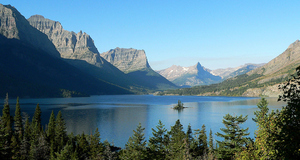Selling the 'Wild': Challenges Facing Volunteer Based Conservation Projects
By
2011, Vol. 3 No. 09 | pg. 1/1
KEYWORDS:
Volunteer conservation is a rapidly growing sub-sector of eco-tourism where fee-paying volunteers travel to developing countries to actively engage in conservation work (Cousins et al 2009b). As volunteers provide the labor and funding for these projects, organizations vie for the attention and capital of volunteers through advertising. Consequently, conservation work has become a marketable commodity in a competitive neoliberal market that is increasingly dominated by private companies (Cousins et al 2009b; Lorimer 2010). To ‘sell’ conservation, volunteer organizations thus construct specific representations of nature that are designed to appeal to volunteers’ values and cultural preferences regarding conservation (Brooks 2005; Cousins et al 2009a). Building on a constructivist epistemology this essay seeks to map these constructions of nature and consider their wider political implications. There follows an initial discussion that draws on an analysis of secondary materials from volunteer conservation websites to identify recurring elements in these constructions, and in doing so develop an idea of the aesthetic, emotive and ecological values that comprise them. To lend focus to the discussion secondary data will be centered on the key actors in the sector: Projects Abroad (TPA), Global Vision International (GVI), i-to-i, Frontier and Earthwatch Institute Europe (EIE). The first three of these are private organizations while the latter two are non-profit charities; a sample that roughly reflects the composition of the sector (Cousins 2007). Secondly, the relations of power and knowledge embedded within these constructions will be examined to discern the ecological and social implications for both conservation and wider society. Constructing Nature for Conservation‘Nature’ is notoriously hard to define. Famously described by Williams (1983: 219) as ‘perhaps the most complicated word in the [English] language’, it is a source of considerable confusion in discourses pertaining to the social construction and commodification of nature (Demeritt 2002; Castree 2003). This essay does not attempt to define nature per se but instead recognizes a multiplicity of meanings, each a product of the social and cultural values implicit in their construction. Furthermore, to clarify the subsequent discussion it should be noted that while the idiom ‘the social construction of nature’ has been applied to a variety of understandings of nature and knowledge, it is taken here to broadly mean ‘the construction of our concepts of nature’ (Demeritt 2002: 767).To create these particular constructions of nature, volunteer organizations utilize a mixture of visual and linguistic tools. A preliminary review of the five organizations’ websites revealed visual imagery to be initially more emotively powerful; however verbal descriptions added far greater depth and detail to the visualization of individual projects. Two categories appear to dominate both visual and linguistic advertising; these are fauna and environment, a deduction supported by Cousins (2007) and Lorimer (2009; 2010). Species-specific projects are extremely popular with volunteers, accounting for 68% of the 324 conservation projects reviewed by Lorimer (2009) in 2007. Charismatic megafauna, such as big cats, primates, elephants, rhinos and turtles are the target of the majority of these projects, however the single most popular species is the lion (Lorimer 2009; 2010). These partialities towards certain taxa are unmistakably reflected in the selection of fauna chosen to advertise volunteer projects. Frontier, GVI and i-to-i all display photographs of lions on either the main homepages or successive pages designated for African projects, while the websites of all five organizations contain numerous images of the charismatic megafauna listed above. Comparatively little can be seen of non-charismatic species, creating an extremely narrow depiction of the biodiversity encompassed by conservation projects. It is not uncommon for charismatic megafauna to be framed as the target of conservation projects that actually include other species research. For instance ‘Jaguar and Puma Research in Mexico’ also involves monitoring local bird populations (GVI 2011), just as ‘Cheetah Conservation in Namibia’ encompasses a number of other wildlife surveys and a livestock guarding dog program (EIE 2011). In these projects Jaguars, Pumas and Cheetahs act as flagship species, defined by Leader-Williams and Dublin (2000) as species strategically chosen for their popularity and ability to raise awareness of, and promote conservation goals to the public. Although attention is focused on a single species, through an umbrella effect it is hoped that the protection of the flagship species in situ will result in the further conservation of the wider ecosystem’s flora and fauna (Dietz et al 1994). That said the result is that the constructions of nature portrayed by volunteer organizations omit familiar and non-charismatic species, perpetuating the popularity of charismatic megafauna. Much of the animal photography used to illustrate the conservation projects depicts volunteers holding or touching fauna, alluding to the possibility of interaction (see figs. 1, 2, & 3).
Cousins (2007: 1021) notes that there has been a ‘growing public demand for close encounters with wildlife’ which Lorimer (2010) states has permeated through to the marketing of conservation projects. Volunteer organizations thus intentionally promote the idea of interaction as part of their constructions of nature in a bid to attract volunteers. Environments are the second main component used by volunteer organizations to create constructions of nature. These are generally depicted through either the scenic locations of projects or the specific habitats targeted by projects. Photographs of coastal and tropical biomes are particularly visible (see figs. 4 + 5) reflecting the high proportion of projects based in these areas (Cousins 2007). There is however a far greater diversity in the environmental imagery utilized compared to that of fauna.
Aside from the odd volunteer, most of the images portraying landscapes, such as figs. 4, 5 and 6, lack any signs of people or human input. This creates the notion that humanity is separate and distinct from nature, a dualism that is at the center of constructivist and realist debates (Proctor 1998). Although there are extremely few landscapes completely unaffected by human existence, constructing nature as external to humanity has proved to be a popular way of recasting environments for purposes of tourism (Neumann 2003; Brooks 2005). In the case of volunteer organizations, it portrays a very selective and skewed image of the conservation projects, most of which are run with the assistance or employment of local peoples (Wearing 2001; Brightsmith et al 2008). Furthermore, constructing nature in opposition to culture fosters the idea that it cannot be experienced or consumed at home. Instead it is cast as a physical place existing outside of society, which can be accessed through these conservation projects. The visual imagery used on the websites of the five volunteer organizations is clearly selected to be aesthetically pleasing (refer to figs. 4, 5 + 6), however it has the additional function of creating romanticized constructions of nature. The text accompanying project information is similarly quixotic but provides greater detail: ‘Immerse yourself in a remote tropical paradise that is one of the world’s few remaining truly pristine environments.’ (GVI 2011) ‘The Research Centre area is famous for its breathtaking mountain vistas, pristine wilderness, and a remarkable diversity of plants and animals.’ (EIE 2011) ‘Projects Abroad's private reserve Reserva Ecologica Taricaya is a slice of unspoilt, untouched Amazon rainforest.’ (PA 2011) These romanticized constructions of nature commonly employ language such as ‘untouched’, ‘pristine’ and ‘unspoilt’, which draws on the constructed externality of nature to create an idea of wilderness (Cronon 1996). Wilderness has been the subject of considerable academic discussion; however it is not the existence of wilderness per se that is debated, but the production and subsequent application of the concept of wilderness (Proctor 1998). Cronon (1996) in particular has critiqued it as a distraction that acts to prioritize some aspects of nature over others. These beautiful, romanticized constructions of nature are also often simplified and obscure the complex realities of the environments they depict (Brooks 2005; Cousins et al 2009a). For instance fig. 6, taken by a volunteer, is simply entitled ‘untouched wilderness.’ Ecological and Social ImplicationsThe constructions of nature created by volunteer organizations are designed to persuade individuals to purchase a conservation experience. As volunteers are the source of labor and capital for these projects, these constructions have the power to influence the allocation of funding within conservation. In a sector where the demand far outstrips the availability of resources (Myers et al 2000; Brightsmith et al 2008) they have the potential to generate funding from individuals who would not otherwise engage in conservation (Campbell and Smith 2006). Additionally these constructions play a part in facilitating the movement of resources from developed to developing countries (Cousins 2007; Lorimer 2009; 2010), where the majority of the world’s biodiversity is housed (Gössling 1999). Further still, Duffy (2002) maintains that encouraging volunteers to participate in conservation is a significant force in the development of ecotourism, which has been proposed as a means through which to reduce global inequality and poverty (Sanderson and Redford 2003; Spenceley and Goodwin 2007). That said, the constructions of nature created by volunteer organizations portray a very narrow vista of ecological diversity. The partialities expressed towards specific fauna and environments mean that resources are concentrated on the Andes and the Amazon, Central America and the Caribbean, Southern and East Africa and Indonesian Islands (Lorimer 2009). Furthermore, while the use of flagship species may be intended to distribute resources across a particular ecosystem, the concept does not function without some difficulty and criticism, and often the flagship species retains the majority of the funding (Caro 2010). The outcome is that resources are directed toward the nature constructed by volunteer organizations and the process becomes more about ‘nature production rather than nature preservation’ (Neumann 2003: 240). These constructions of nature are based on the perceived and often very real cultural preferences of volunteers. In general volunteering abroad is a western phenomenon (Wearing 2001), and consequently these constructions promote an innately western perspective of nature. This excludes local and indigenous knowledge even though it is the local populations that are likely to be most affected by the existence and impacts of the projects. Additionally volunteers’ values towards conservation tend to be centered on aesthetic qualities rather than ecological priorities (Gray and Campbell 2007). The end result is that resources are channeled into constructions of nature that prioritize popular western preferences (Akama 1996; Neumann 2003; Brooks 2005; Duffy 2008). While the constructions of nature visible on conservation websites are designed to attract volunteers, they also create an expectation of the conservation experience (Cousins et al 2009a); this creates two problems. Firstly volunteers must often come to terms with the disparity between their romanticized notions and the realities of conservation work. In Cousins et al’s (2009a: 1072) experience this was an emotionally charged period tinged with ‘frustration’ and ‘disappointment’ as volunteers felt they had been deceived. Local project staff must also deal with the expectations of volunteers, which may conflict with their own or the project’s conservation priorities (Gray and Campbell 2007; Coghlan 2008). The final implication considered by this essay is the self-perpetuating quality of these highly specialized and western-centric constructions of nature. They are marketed because they represent the popular preferences of volunteers, however their use in advertising only reinforces their visibility and popularity as a construction of nature, creating further incentive to use them in marketing. Thus the organizations are not only constructing and selling nature, they are also controlling conservation practice in the volunteer sector. ConclusionVolunteer organizations create highly specialized western-centric constructions of nature that spotlight charismatic megafauna and romanticized notions of wilderness. Their marketing is focused on aesthetic values and largely ignores the wider ecological significance of conservation efforts. These constructions have the power to influence the allocation of resources and control whose knowledge is incorporated into conservation practice. Ultimately they are responsible for which aspects of our biosphere are perceived as threatened and which gain attention and protection. The result is that through these constructions of nature, volunteer organizations have a considerable degree of power and control over conservation practice. Although the construction and commodification of nature is by no means a new phenomenon, the rapid growth of international volunteering makes the issues raised in this essay all the more consequential. With increasing numbers of private organizations entering the sector it is likely that tensions between conservation priorities and financial gain will arise (Cousins et al 2009b). Of particular interest is the way in which volunteer organizations will (or will not) alter these constructions of nature if conservation projects are successful. Essentially, how will they adapt if popular fauna and biomes are no longer threatened or endangered?
Akama, J. (1996) ‘Western environmental values and nature-based tourism in Kenya’ Tourism Management 17(8): 657-574. Brightsmith, D. J., Stronza, A. and Holle, K. (2008) ‘Ecotourism, conservation biology, and volunteer tourism: A mutually beneficial triumvirate’ Biological Conservation 141(11): 2832-2842. Brooks, S. (2005) ‘Images of ‘Wild Africa’: nature tourism and the (re)creation of Hluhluwe game reserve, 1930-1945’ Journal of Historical Geography 31(2): 220-240. Campbell, L. M. and Smith, C. (2006) ‘What Makes Them Pay? Values of Volunteer Tourists Working for Sea Turtle Conservation’ Environmental Management 38(1): 84-98. Caro, T. (2010) ‘Conservation by Proxy: Indicator, Umbrella, Keystone, Flagship, and Other Surrogate Species’ Washington: Island Press. Castree, N. (2003) ‘Commodifying what nature?’ Progress in Human Geography 27(3): 273-297. Coghlan, A. (2008) ‘Exploring the Role of Expedition Staff in Volunteer Tourism’ International Journal of Tourism Research 10(2): 183-191. Cousins, J. A. (2007) ‘The role of UK-based conservation tourism operators’ Tourism Management 28(4): 1020-1030. Cousins, J. A., Evans, J. and Sandler, J. P. (2009a) ‘‘I’ve paid to observe lions, not road maps!’ – An emotional journey with conservation volunteers in South Africa’ Geoforum 40(6): 1069-1080. Cousins, J. A., Evans, J. and Sadler, J. (2009b) ‘Selling Conservation? Scientific Legitimacy and the Commodification of Conservation Tourism’ Ecology and Society 14(1): 32. Cronon, W. (1996) ‘The Trouble with Wilderness; or, Getting Back to the Wrong Nature’ in Cronon, W. (ed) Uncommon Ground: Rethinking the Human Place in Nature. New York: W.W. Norton and Company, pp. 69-90. Demerrit, D. (2002) ‘What is the ‘social construction of nature’? A typology and sympathetic critique’ Progress in Human Geography 26(6): 767-790. Dietz, J. M., Dietz, L. A. and Nagagata, E. Y. (1994) ‘The effective use of flagship species for conservation of biodiversity: the example of lion tamarins in Brazil’ in Olney, P. J. S., Mace, G. M. and Feistner, A. T. C (eds) Creative conservation: interactive management of wild and captive animals London: Chapman and Hall, pp. 32-49. Duffy, R. (2002) ‘A Trip Too Far. Ecotourism, Politics and Exploitation’ London: Earthscan Publications. Duffy, R. (2008) ‘Neoliberalising nature: global networks and ecotourism development in Madagascar’ Journal of Sustainable Development 16(3): 327-344. Leader-Williams, N. and Dublin, H. T. (2000) ‘Charismatic megafauna as ‘flagship species’’ in Entwistle, A. and Dunstone, N. (eds) Priorities for the conservation of mammalian diversity: has the panda had its day? Cambridge: Cambridge University Press, pp. 53-82. Gössling, S. (1999) ‘Ecotourism: A means to safeguard biodiversity and ecosystem functions?’ Ecological Economics 29(2): 303–320. Gray, N. J. and Campbell, L. M. (2007) ‘A Decommodified Experience? Exploring Aesthetic, Economic and Ethical Values for Volunteer Ecotourism in Costa Rica’ Journal of Sustainable Tourism 15(5): 463-482. Lorimer, J. (2009) ‘International conservation volunteering from the UK: what does it contribute?’ Oryx 43(3): 352-360. Lorimer, J. (2010) ‘International conservation ‘volunteering’ and the geographies of global environmental citizenship’ Political Geography 29(6): 311-322. Myers, N., Mittermeier, R. A., Mittermeier, C. G., da Fonseca, G. A. B. and Kent, J. (2000) ‘Biodiversity hotspots for conservation priorities’ Nature 403(6772): 853–858. Neumann, R. (2003) ‘The Production of Nature: Colonial Recasting of the African Landscape in Serengeti National Park’ in Zimmerer, K. and Bassett, T. (eds) Political Ecology: An Integrative Approach to Geography and Environment-Development Studies. New York: The Guildford Press, pp. 240-255. Proctor, J. D. (1998) ‘The Social Construction of Nature: Relativist Accusations, Pragmatist and Critical Realist Responses’Annals of the Association of American Geographers 88(3): 352-376. Sanderson, S. E. and Redford, K. H. (2003) ‘Contested relationships between biodiversity conservation and poverty alleviation’ Oryx 37(4): 389-390. Spenceley, A. and Goodwin, H. (2007) ‘Nature-based Tourism and Poverty Alleviation: Impacts of Private Sector and Parastatal Enterprises In and Around Kruger National Park, South Africa’ in Hall, M. (ed) Pro-poor Tourism: Who Benefits? Perspectives on Tourism and Poverty Reduction Clevedon: Channel View Publications, pp. 145-164. Wearing, S. (2001) ‘Volunteer Tourism: Experiences that Make a Difference’ Oxfordshire: CABI Publishing. Williams, R. (1983) ‘Keywords: a vocabulary of culture and society’ 2nd Edition. London: Flamingo.
Earthwatch Institute Europe (2011) ‘Earthwatch Institute (Europe)’ Available at http://www.earthwatch.org/europe/ [Accessed 21/02/11]. Frontier (2011) ‘Frontier. Conservation. Education. Exploration’ Available at http://www.frontier.ac.uk/ [Accessed 21/02/11]. Global Vision International (2011) ‘GVI. You are the difference’ [online] Available at http://www.gvi.co.uk/ [Accessed 21/02/11]. i-to-i (2011) ‘i-to-i. Adventure and Volunteer Travel’ Available at http://www.i-to-i.com/homepage-b [Accessed 21/02/11]. Projects Abroad (2011) ‘Projects Abroad’ Available at http://www.projects-abroad.co.uk/ [Accessed 21/02/11]. Suggested Reading from Inquiries Journal
Inquiries Journal provides undergraduate and graduate students around the world a platform for the wide dissemination of academic work over a range of core disciplines. Representing the work of students from hundreds of institutions around the globe, Inquiries Journal's large database of academic articles is completely free. Learn more | Blog | Submit Latest in Environmental Studies |




















